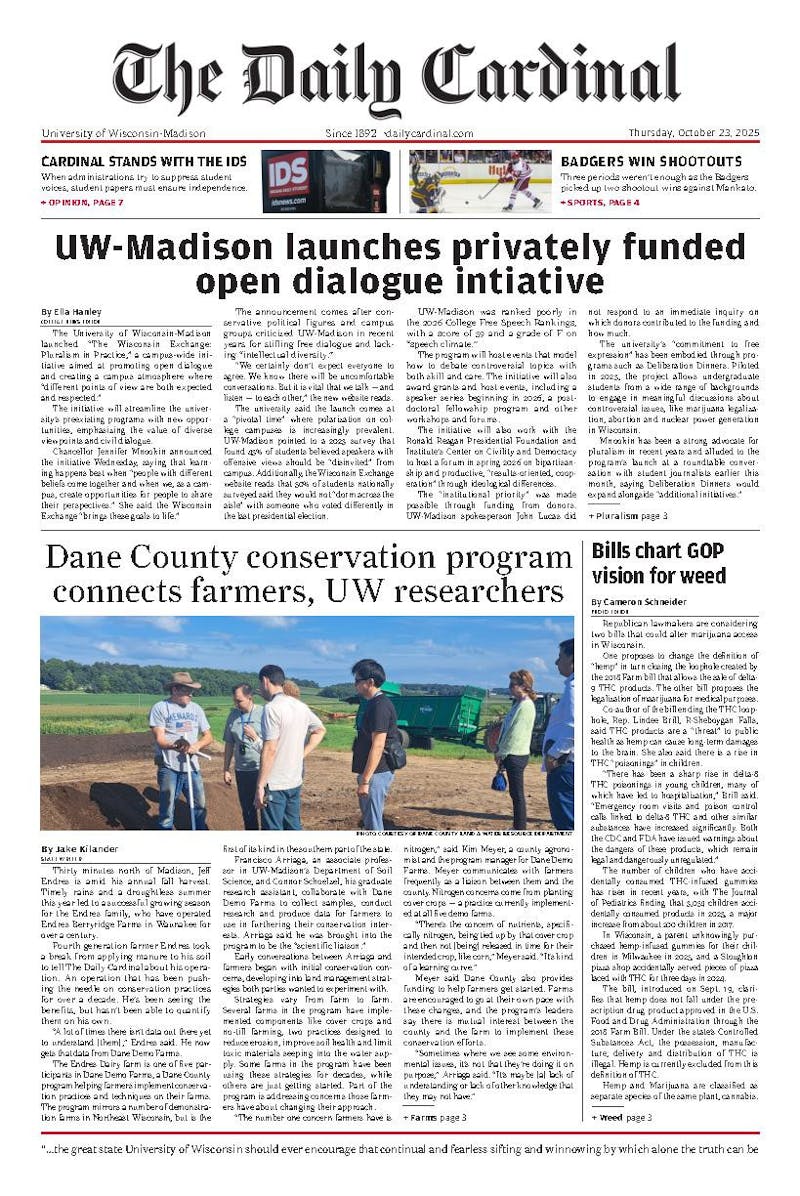The 1990s economic upswing produced low inflation, high incomes and large government spending on all levels, which may have lead to the current Wisconsin budget crisis, according to a report released Friday by the Wisconsin Taxpayers Alliance.
The nonpartisan analysis shows that although inflation increased by an average of approximately 2.8 percent per year during the past decade, state spending rose concurrently 6 percent per year.
State Sen. Fred Risser, D-Madison, said he saw nothing wrong with the manner the state handled the surplus of funds.
\I really don't see why government should stick with inflation,"" he said. ""People are demanding additional services and the government provided those services. That's the purpose of government.""
Local forms of government varied in the amount they spent, with cities registering, on average, a 4.9 percent annual increase. Counties came in around 6.6 percent, while villages, on the whole, spent the most per year, at 7.1 percent.
Madison Ald. Mike Verveer, District 4, and Steve Holtzman, District 19, both said Gov. Scott McCallum was wrong to accuse municipalities of overspending.
""We have not spent money like a bunch of drunken sailors,"" Verveer said. ""The city of Madison has long been pretty frugal with taxpayers money.""
Sharyn Wisniewski, executive assistant to Dane County Executive Kathleen Falk, said the county has a self-imposed rule not to increase taxes, and therefore spending, beyond the combined inflation and population growth rates, mandating it to be fiscally conservative.
""Dane County [spending] has increased about 3.5 percent annually,"" she said. ""That has forced the county government and [Falk] to prioritize programs.""
Holtzman said the city does not spend more than the inflation and growth rate because under the state Expenditure Restraint Program, it would lose a portion of its state funding. The only increase in city spending came as a direct result of land and population increases, according to Holtzman.
""The city grew significantly in the past decade,"" Holtzman said.
Another sign of the health of the city is its AAA bond rating, the highest a city can receive, while the state's bond rating has decreased in the past few years, according to Holtzman.
""The state's bond rating has declined because of its poor budgeting, overspending and the betting that the Clinton boom years would continue,"" he said.
Risser said that in retrospect, the state may have made some unwise moves but he added added that no one can truly be singled out for the cause of the deficit.
""It would have been prudent for the state to have a rainy day fund,"" he said. ""Gov. Thompson proposed to spend all the money, plus some money we didn't have, and the Legislature went along with it. You can't blame anyone in particular.\





